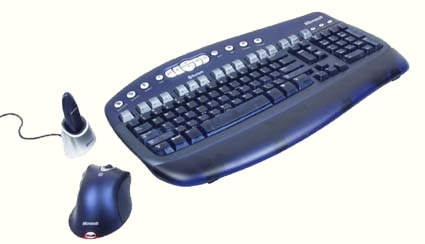Bluetooth: A Rundown
Introduction
Bluetooth is a promising technology in the making. The keenest manufacturers keep assuring us that next year will be the year of Bluetooth , no matter that they've been doing so for the last seven years. But the reality is that IT shows tantalize us with oodles of mouth-watering products that never actually hit the shelves. Logitech has had a prototype Bluetooth keyboard/mouse set since 2000, but has finally been check-mated - three years later - by Microsoft with the Wireless Optical Desktop for Bluetooth.
A Brief History
This wireless technology takes its name from a feat of arms accomplished by the Viking Harald Blaatand, meaning literally Harald Bluetooth , who united the realms of Norway and Denmark in a Europe divided by wars of religious and territorial dispute.
This is where the originators of Bluetooth (Ericsson, IBM, Intel, Nokia and Toshiba) got their inspiration: the squabbles among too many products with too many different protocols. PCs, cell phones, PDAs, printers - every one communicates with the rest of the world via an Ethernet network, or a USB link, or else a parallel or serial port. So there is a definite need to simplify all of these different forms of communication and bring them under the umbrella of a single standard.
The resultant wireless technology should link up to eight devices within a radius of ten meters, with a special focus on domestic networks for private homes: the TV with a DVD player/ recorder, which is connected to the computer, which synchronizes its data with a cell phone. Full of promise it may be, but Bluetooth technology, introduced by Ericsson in 1994, was hampered by too much incompatibility. Very few 1.0 and 1.0b standard devices could even recognize each other and exchange data, so it was practically impossible to connect two devices of different makes. Worse still, Bluetooth networks were soon found to be incompatible with WiFi ones, which, at the time, were on the same frequency band. Hence last year's WiFI (or IEEE 802.111b) migration to 5 GHz (5470 - 5725 MHz) and the release of an umpteenth Bluetooth update, version 1.1.
Get Tom's Hardware's best news and in-depth reviews, straight to your inbox.


